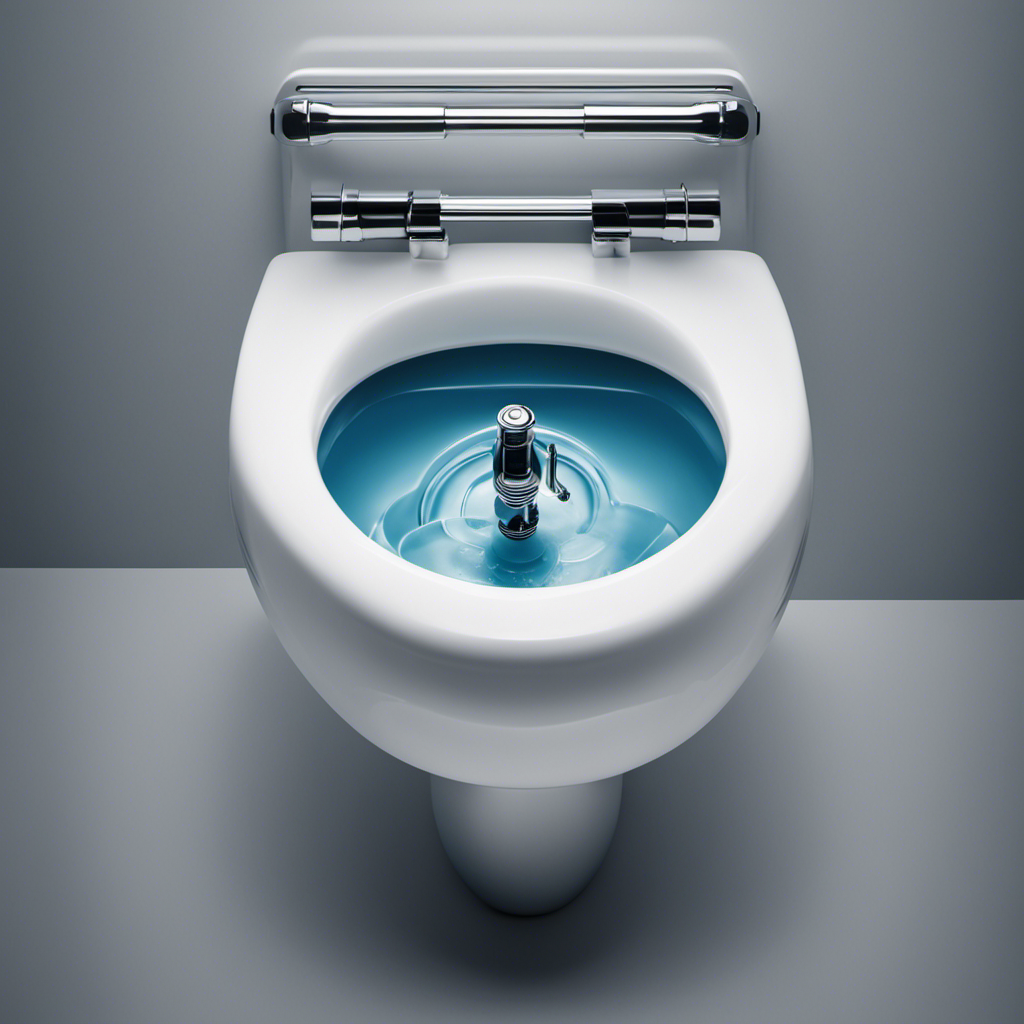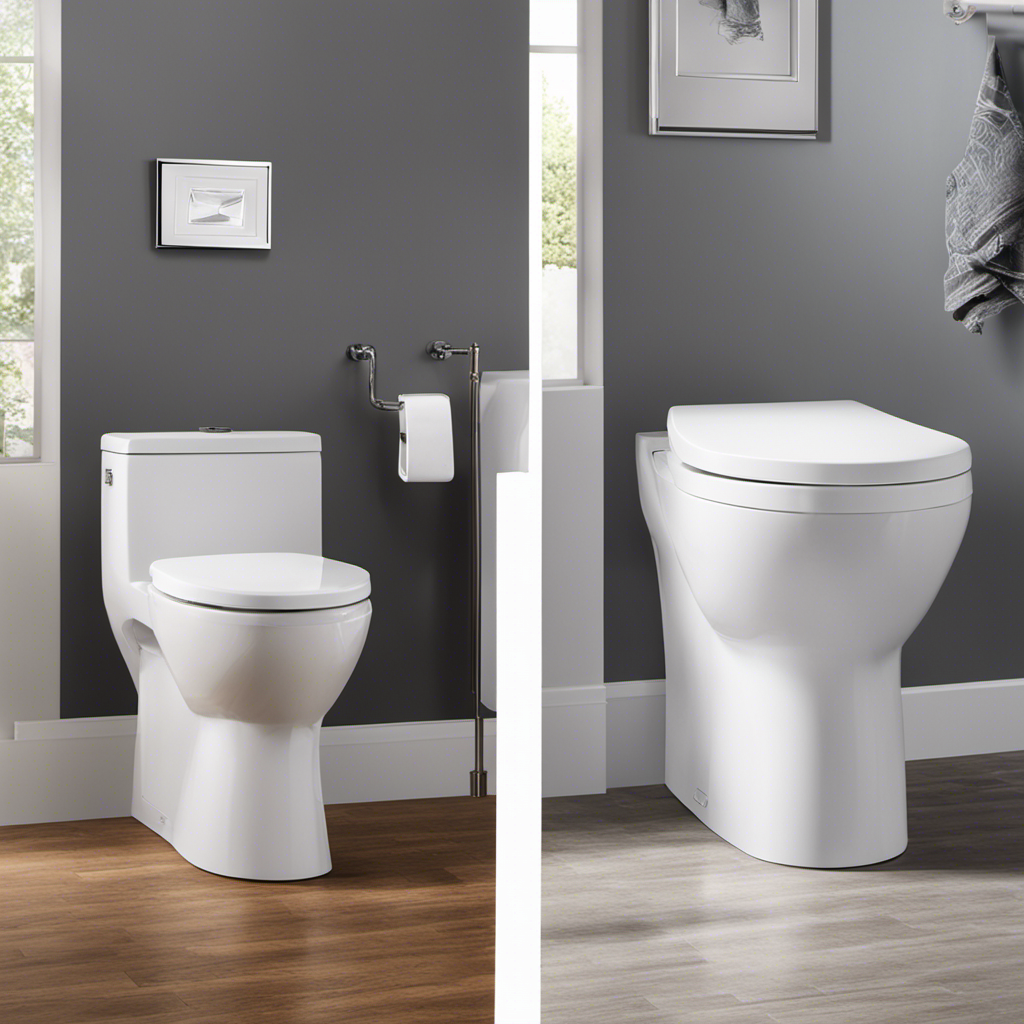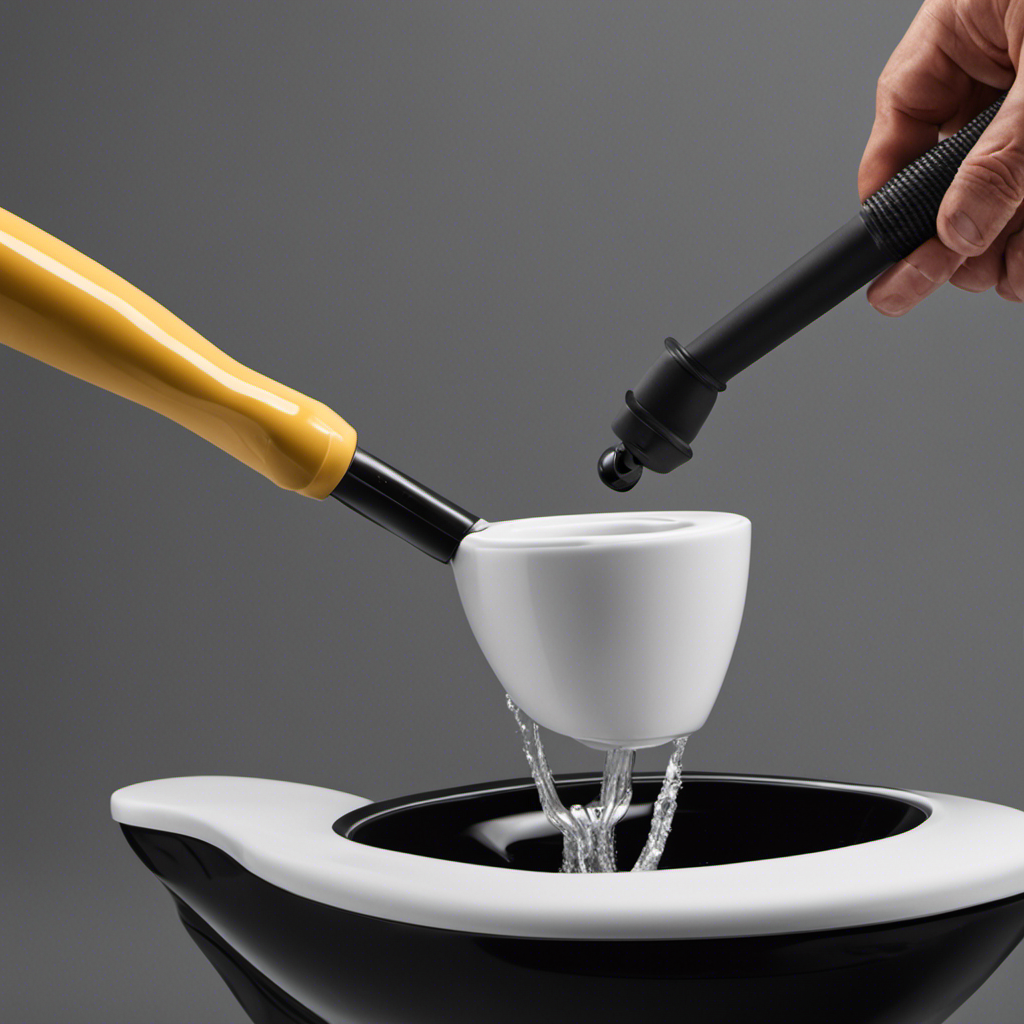As I stand in my bathroom, listening to the incessant sound of water running, I realize it’s time to tackle the troublesome issue of a running toilet.
Don’t worry, I’ve got you covered with this comprehensive guide on how to stop that pesky water waste. From understanding the common causes to troubleshooting persistent problems, I’ll walk you through every step.
So, let’s roll up our sleeves and get ready to put an end to this never-ending stream of water.
Key Takeaways
- Continuous hissing sound and constant flow of water into the bowl are common signs of a running toilet.
- Checking and replacing the flapper valve is important if it is worn out or misaligned.
- Adjusting the water level in the toilet tank and troubleshooting any fluctuations or constant running is necessary.
- Fixing common leaks and replacing a faulty fill valve are essential steps to stop a toilet from running.
Understanding the Common Causes of a Running Toilet
Understanding the common causes of a running toilet can help you troubleshoot and fix the issue.
There are a few common signs that indicate your toilet is running. If you hear a continuous hissing sound, notice water constantly flowing into the bowl, or see the water level rising above the normal level, your toilet is running.
Potential solutions for a running toilet include checking the flapper valve, which may be worn out or misaligned, and replacing it if necessary. Another common cause is a faulty fill valve, which can be fixed by adjusting the float or replacing the entire valve assembly.
Additionally, a clogged or defective overflow tube can cause a running toilet, and this can be resolved by cleaning or replacing the tube.
Checking the Flapper Valve for Proper Functioning
Check if the flapper valve is working correctly by listening for any water sounds. Here are three key things to observe when assessing the flapper valve:
-
Lift the toilet tank lid and listen for any water running or dripping sounds. A faulty flapper valve may not create a proper seal, causing water to continuously flow into the toilet bowl.
-
Observe the flapper for any signs of damage, such as cracks or deterioration. A damaged flapper might not close tightly, leading to water leakage and a running toilet.
-
Check the chain length that connects the flapper to the flush handle. The chain should have minimal slack, ensuring the flapper closes fully after every flush.
If you discover any issues with the flapper valve, it may be necessary to replace it. There are various flapper replacement options available, such as universal flappers that fit most toilets or specific flappers designed for certain toilet brands. Ensure you choose a flapper that matches your toilet model for optimal performance.
Adjusting the Water Level in the Toilet Tank
When it comes to maintaining a properly functioning toilet, there are a few key points to keep in mind.
First and foremost, ensuring the water level in the toilet tank is at the correct height is crucial for optimal performance.
Secondly, adjusting the float mechanism can help regulate the water level and prevent overflow or inadequate flushing.
Lastly, addressing common leaks promptly can save water and prevent any potential damage to the toilet.
Proper Water Level
To adjust the water level in your toilet, simply turn the float adjustment screw.
Maintaining the proper water level in your toilet is crucial for efficient operation. Here are three key factors to consider:
-
Water level: Adjust the water level to reach the fill line marked on the inside of the tank. This ensures proper flushing and prevents overflow issues.
-
Float height: Set the float, connected to the fill valve, at the correct height. Too high and the water level will be too high. Too low and the toilet may not flush properly. Finding the right float height is essential for optimal performance.
-
Regular inspections: Regularly check the water level in your toilet tank. If you notice fluctuations or the toilet constantly running, employ troubleshooting techniques such as cleaning the valve, checking for leaks, or replacing worn-out parts.
Adjusting Float Mechanism
Make sure you adjust the float mechanism properly to ensure the efficient operation of your toilet. The float mechanism is responsible for regulating the water level in the tank. If it is not adjusted correctly, you may experience issues such as constant running or an overflowing toilet.
To troubleshoot overflow, first, check if the float is set too high. This can cause the water to reach the overflow tube, leading to a constant flow of water. Adjust the float by bending the rod or adjusting the screw to lower the water level.
Another common issue is a misaligned refill tube. Ensure that the refill tube is positioned properly over the overflow tube to prevent water from continuously flowing into the bowl.
By addressing these adjustments, you can prevent your toilet from running and overflowing.
Now, let’s move on to fixing common leaks.
Fixing Common Leaks
You can easily fix common leaks in your toilet by checking the seals and connections. Here are three steps to help you fix these leaks and prevent water wastage:
-
Inspect the toilet handle: Sometimes, a leaky toilet handle can cause water to continuously run. To fix this, simply tighten the handle or replace it if necessary. Make sure the connection between the handle and the flushing mechanism is secure.
-
Check the seals: Leaks can occur around the base of the toilet or between the tank and bowl. Inspect these areas for any signs of water seepage. If you notice any leaks, you may need to replace the wax seal or the rubber gaskets.
-
Replace the toilet flapper: The flapper is a rubber valve that controls the flow of water from the tank to the bowl. If it becomes worn or damaged, it can cause leaks. Replacing the flapper is a simple and cost-effective solution to fix this issue.
Replacing a Faulty Fill Valve
When it comes to fill valve troubleshooting and proper installation techniques, it is important to have a solid understanding of how these components work. A faulty fill valve can lead to issues such as constant running or inadequate water supply in the toilet tank.
Fill Valve Troubleshooting
If the toilet is continuously running, it might be due to a faulty fill valve. The fill valve is responsible for regulating the water flow into the toilet tank.
To troubleshoot the fill valve and fix the issue, follow these steps:
-
Check for leaks: Look for any signs of water leakage around the fill valve or the connecting pipes. This could indicate a faulty valve or a loose connection.
-
Adjust the water level: Use the adjustment screw on the fill valve to control the water level in the tank. By turning it clockwise or counterclockwise, you can increase or decrease the water level respectively.
-
Clean or replace the fill valve: If the fill valve is clogged or damaged, it may need to be cleaned or replaced. Disconnect the water supply, remove the valve, and either clean it thoroughly or install a new one.
Proper Installation Techniques
During installation, it’s important to ensure that the fill valve is securely connected to the toilet tank. Proper installation techniques are crucial for preventing any future issues with your toilet.
Here are some installation tips to help you avoid common mistakes. Firstly, make sure to tightly fasten the fill valve to the water supply line. This will prevent any leakage and ensure a proper water flow.
Secondly, ensure that the float arm is properly adjusted so that it doesn’t interfere with the operation of the fill valve.
Lastly, check for any leaks after installation by flushing the toilet multiple times and inspecting for any water seepage.
By following these installation tips, you can ensure that your fill valve is correctly installed and functioning efficiently.
Now, let’s move on to fixing a leaky flush valve.
Fixing a Leaky Flush Valve
To fix a leaky flush valve, you’ll need to replace the faulty gasket. Here’s how to do it:
-
Turn off the water supply: Locate the shut-off valve near the base of the toilet and turn it clockwise to stop the water flow. This will prevent any further leakage while you work on the flush valve.
-
Remove the tank lid: Lift the lid off the toilet tank and set it aside in a safe place. Be careful not to drop it or damage it.
-
Replace the gasket: Locate the flush valve assembly inside the tank. Remove the old gasket and replace it with a new one. Make sure it’s properly aligned and snugly fitted.
Troubleshooting Persistent Running Issues
Persistent running issues with your toilet can often be resolved by adjusting the water level in the tank.
Troubleshooting persistent running issues with a toilet requires a systematic approach to identify and resolve the underlying plumbing issues.
Firstly, check the water pressure in your home’s plumbing system. Low water pressure can cause the toilet’s fill valve to malfunction, leading to continuous running.
If the water pressure is normal, inspect the fill valve and flapper for any signs of damage or wear. Replace any faulty components to restore proper functioning.
Additionally, ensure that the water level in the tank is adjusted correctly. If the water level is too high, it can result in constant water flow into the bowl.
Frequently Asked Questions
How Do I Clean the Toilet Bowl?
To clean the toilet bowl, start by using a toilet brush and a cleaner specifically designed for toilets. Scrub the bowl thoroughly, focusing on stubborn stains. Regularly maintaining cleanliness can help prevent the toilet bowl from getting dirty.
What Tools Do I Need to Fix a Running Toilet?
To fix a running toilet, you’ll need a few essential tools like an adjustable wrench, a screwdriver, and possibly a plunger. Understanding the causes of a running toilet will help you diagnose and repair the issue efficiently.
Can I Use Any Type of Flapper Valve as a Replacement?
Well, wouldn’t you know it? Turns out, not just any flapper valve will do as a replacement. You’ll need to consider compatibility and explore alternative options to stop that toilet from running.
How Often Should I Check the Water Level in the Toilet Tank?
Checking the water level in the toilet tank regularly is crucial for maintaining its proper functioning. It helps in preventing issues like a malfunctioning water level sensor and ensures that the toilet doesn’t run unnecessarily, saving water and money.
Is It Safe to Use a Running Toilet or Should It Be Fixed Immediately?
Using a running toilet can waste water and increase your water bill. It’s best to fix it immediately. To temporarily fix a running toilet, you can adjust the float or replace the flapper valve.
Conclusion
In conclusion, it’s essential to address a running toilet promptly to avoid wasting water and incurring high water bills.
By understanding common causes such as a faulty flapper valve or fill valve, adjusting the water level, or fixing a leaky flush valve, you can easily stop a toilet from running.
Did you know that a running toilet can waste up to 200 gallons of water per day? Taking immediate action to fix the issue will not only save water but also contribute to conserving our precious resources.










